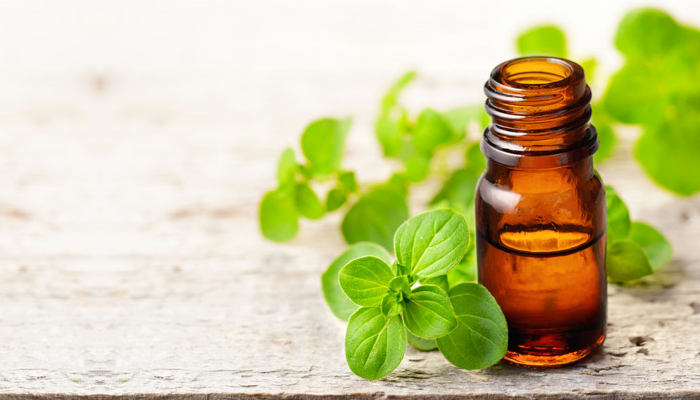The active ingredients and substances from nature that can be used in animal production are complex and numerous: essential oils, oleoresins, plant extracts, natural or synthetic molecules, etc… To make the most of their properties, it is essential to keep in mind a few key criteria that will help you choose the best solution.

“Essential oils”, oleoresins, identical nature, what are the differences?
Why do plants produce actives?
Plants have so-called secondary metabolic compounds because they are not involved in the growth or reproduction of the plant. Yet they are synthesized and have a function. Some of them are volatile and are involved in the communication of plants towards predators or congeners, either to make organs inappetent (most often bitter) or to make certain fruits attractive (for dissemination) when it is not to alert congeners or even to fight against other plant species. In short, animals do not have a monopoly on communication. Understanding the language of plants becomes necessary if we want to be able to use their communication with farm animals.
What are the types of active ingredients and the right plants to choose for a guaranteed effect?
The plant extracts authorised on the European market have very varied chemical compositions and highly complementary modes of action. The composition of the products depends on the mode of extraction and the variability of the active ingredient. For instance, essentials oils are obtained by distillation. Choosing a highly standardised extraction process results in more regular products and therefore more consistent effects.
Characteristics of plant extracts according to the method of production
| Types of extract | Crushed powders | Essential oils | Dyes | Oleoresins | Nature identical |
| Extraction method | Grinding | Distillation H2O vapour | Alcoholic maceration | Solvent extraction | Chemical synthesis |
| Concentration of active ingredients | Very low | Strong | Low | Strong | Almost pure |
| Variability | Important | High | Low | Low | Nearly nil |
| Ease of standardization | Impossible | Low | Average | High | Perfect |
| Facial costs | Low | Medium | Important | High | Medium to high |
But no matter which product you choose, essential oils or oleoresins, it will be faced with a complex and fluctuating reality. This explains the sometimes random effects of plant extracts. To face this complexity, there is only one weapon: complexification. You should not hesitate to mix extracts and play on their synergies to broaden their spectrum of action (consistency) or lower their concentration (cost of treatment).
The choice
The question then becomes what synergies are really effective, and what proportion to choose between standardised and purified products, or even synthetic products for regularity and natural products with a broad spectrum but often less robust.
1. Supplier’s experience
In Europe, the regulatory framework related to substances used in animal feed is regulated by Regulation 1831/2003 EC. The involvement of a company in a trade association such as FEFANA is a guarantee of reliability in the choice of its additive. It is at this level that the possibilities of using active ingredients in feedingstuffs come into play.
2. Galenic formulation is essential
Whichever mixture of concentrated active ingredients is chosen, based on essential oils or otherwise, it is then formulated to control the place of release of the active ingredients according to the targeted functionality:
The oropharyngeal sphere for neurosensory products
If one wishes:
- Bringing attractive functionality to the feed: functional flavouring
- Reducing the perception of psychosocial stress: sensory additive
The choice will be to use a product with a neuro-sensory mode of action that acts first on the sensory receptors of the oropharyngeal sphere. A specific galenic formulation guaranteeing a balance between the stability and volatility of the functional molecules must be used.
The digestive sphere for products with physiological action.
If one wishes to use the regulating properties of the bacterial flora of certain essential oils, it will be necessary to opt for a release in the distal digestive parts. With a disintegrating carrier, the release is then “time-dependent” and does not involve enzymatic degradation. To understand, a model of release inspired by pharmacy illustrates the mechanics of release of this type of galenic (temperature and pH controlled).
3. Tests of resistance to the feed manufacturing process
The pre-formulation is put to the test of industrial testing through granulation, thermisation or extrusion tests. The stability of the product in its final support (water, feed) is tested, as well as its stability under transport and storage conditions (low, high temperatures, thermal shock) and compression. Tracers of the active ingredients are dosed into the product and into the feed carrier in order to make any necessary adjustments to the formulation.
4. The best judge is still the animal
Reaching the target in the animal
For specific digestive targets, a step of monitoring active markers in the digestive tract is added to ensure that the active ingredients reach their place of action in the right concentration.
Animal behaviour is the best indicator
The 4 previous tips would be useless if the chosen solution is not evaluated by the most demanding and impartial judge: the animal. Measuring production performance indicators is possible, but basing on upstream behavioural indicators will only improve the validation of the solution.
Observing the animal’s behaviour gives indications on its well-being and is a precursor indicator of future performance:
- Loyalty to the feed and the absence of refusal
- increased resting and rumination time for dairy cows
- decreased nervousness and scratching in poultry
- reduction of diarrhoea in piglets
To make the right choice, let’s trust the end user: the animal!








